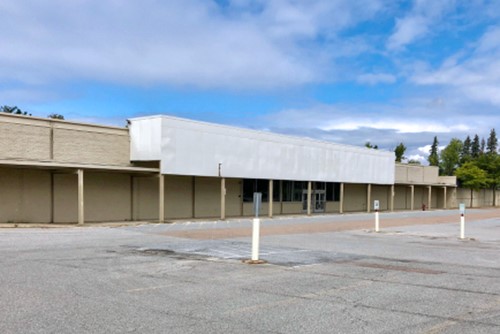Last week, staff members of The Oxford Club held a series of strategy sessions at the beautiful Nemacolin Woodlands Resort in southwestern Pennsylvania.
On the drive home, I decided to take the back roads through some gorgeous countryside and historic small towns in Pennsylvania, Maryland and West Virginia.
While I enjoyed the winding highway and bright spring colors, I also saw something less pretty: countless shuttered stores and vacant strip malls.
Aside from the local banks, dry cleaners and auto centers, retailers – with the exception of a few dollar stores – had largely vanished.
Some view this – not least of all politicians running for office – as evidence that America is in decline, consumers are struggling and the economy isn’t really working.
That’s the opposite of the truth.
Let’s set aside our preconceived notions about the state of the nation and look at a few undisputed facts.
The U.S. economy grew 3.2% in the first quarter. That’s 60% better than the 2% average growth during the eight years of the Obama administration.
Sure, that’s just one quarter. But for the first two full years of the Trump administration, the economy has grown at 3%. That’s still 50% better.
Incidentally, I’m not giving Trump all the credit for this. It’s the private sector – not the public sector – that drives innovation, efficiency and productivity.
Yet public policies do affect the economy for better or worse.
And deregulation, lower taxes and a hard line against China’s unfair trade practices have been good news for businesspeople, consumers and investors.
Think about it. Are all those retail stores closed because of joblessness?
Of course not. On Friday, the Labor Department announced that 263,000 jobs were created last month. (According to Bloomberg, economists had expected only 190,000.)
The unemployment rate hit 3.6%, the lowest in half a century. Payrolls have now risen for 104 straight quarters.
Maybe those rural and small-town stores closed because wages were stagnant?
That explanation doesn’t work either.
Average hourly earnings increased again in April. Over the last 12 months, earnings rose a healthy 3.2%, a hair’s breadth from the best level of the recovery.
Could it be that jobs and wages are up but inflation has offset the gains?
No, the Federal Reserve reported last week that overall inflation is running below 2%.
So why the heck are those stores closed? Clearly it’s not a bad economy, lackluster household income or foreign competition.
The real reason is capitalism, working exactly the way it’s supposed to work.
This may be bad news for some chains and franchisers – not to mention mom-and-pop store owners – but it is good news for the vast majority of us.
Economist Joseph Schumpeter (1883-1950), that great defender of free markets, pointed out that capitalism is unrivaled for creating opportunity and prosperity.
But it happens in a way that some won’t like. It’s called “creative destruction.”
Imagine what the folks in the horse-and-buggy industry thought when they heard what Henry Ford was up to.
Or what the people at Kodak thought when they saw the first digital camera. (Or what the men and women in the digital camera industry thought when they saw the first iPhone.)
Blockbuster succumbed to Netflix. Hotel companies braced for Airbnb. And taxi owners are still reeling from the effects of Uber and Lyft.
In each case, there was displacement and loss. Workers lost jobs. Owners lost businesses. And investors lost capital.
But the big winners – in each and every case – were consumers. And we’re all consumers.
Those small retailers (and ex-retailers) I passed on my drive were devastated by online commerce, not least of all Amazon.
Many will grouse that the e-commerce giant put them out of business. But that’s not exactly true.
Their customers or, more accurately, their former customers – who clearly preferred more selection, lower costs and greater convenience – put them out of business by voluntarily choosing to shop online.
(And, of course, Dollar General and Family Dollar are still there when locals need to grab something in a pinch.)
The end result of all this creative destruction?
The economy is strong not weak. Joblessness is lower not higher. Wages are up not down. And inflation – outside of healthcare and higher education – is largely MIA.
Don’t fall for the siren song of the demagogues who want to convince you that the American economy is a mirage and the historic stock market rally the triumph of hope over experience.
We are in a “Goldilocks economy” with solid growth, rock-bottom interest rates, meager inflation and rising corporate profits.
That is what has been playing out in the stock market lately.
And in a few days, when the Federal Reserve reports U.S. household net worth – that’s all assets (like real estate, bank accounts and brokerage accounts) minus all liabilities (like mortgages, auto loans and credit card debt) – it will be another all-time record.
I’d like to predict that this will stifle the naysayers, but history shows it most certainly won’t. And that’s OK.
The dogs bark, but the caravan moves on.
Good investing,
Alex
